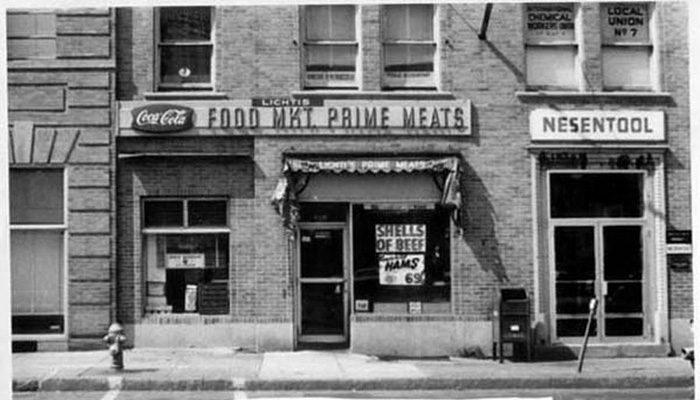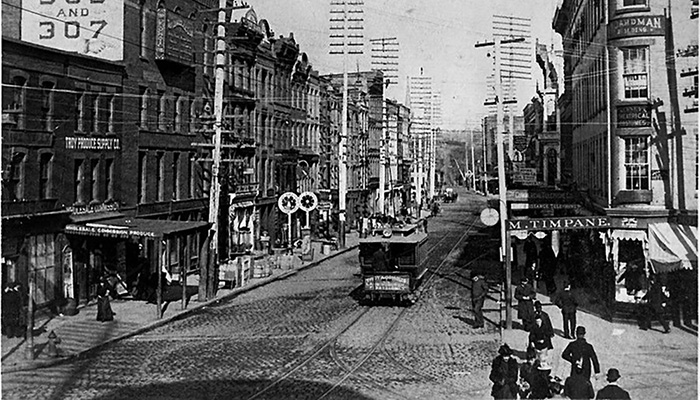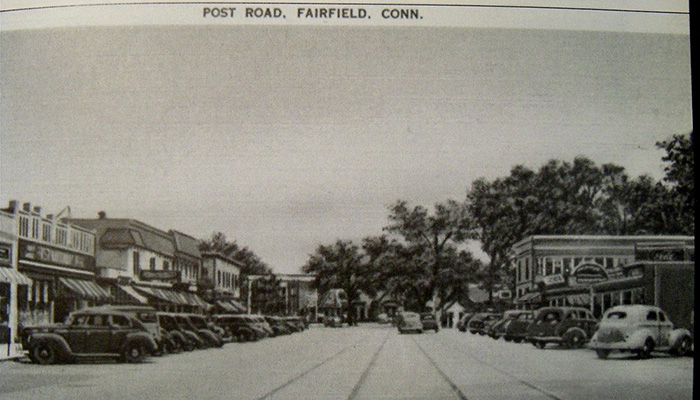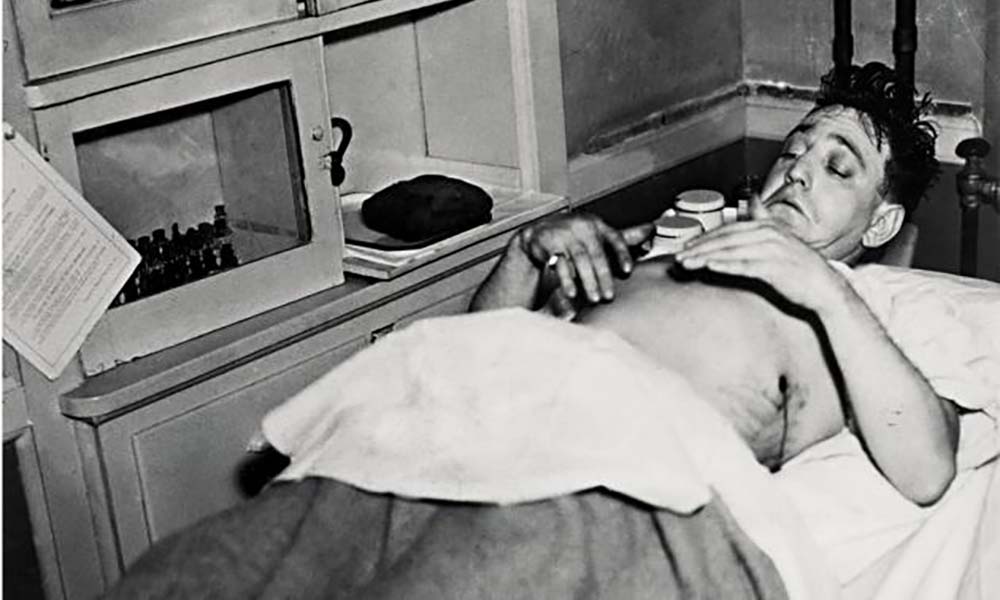Ongoing Search For Dutch Schultz’s Missing Millions
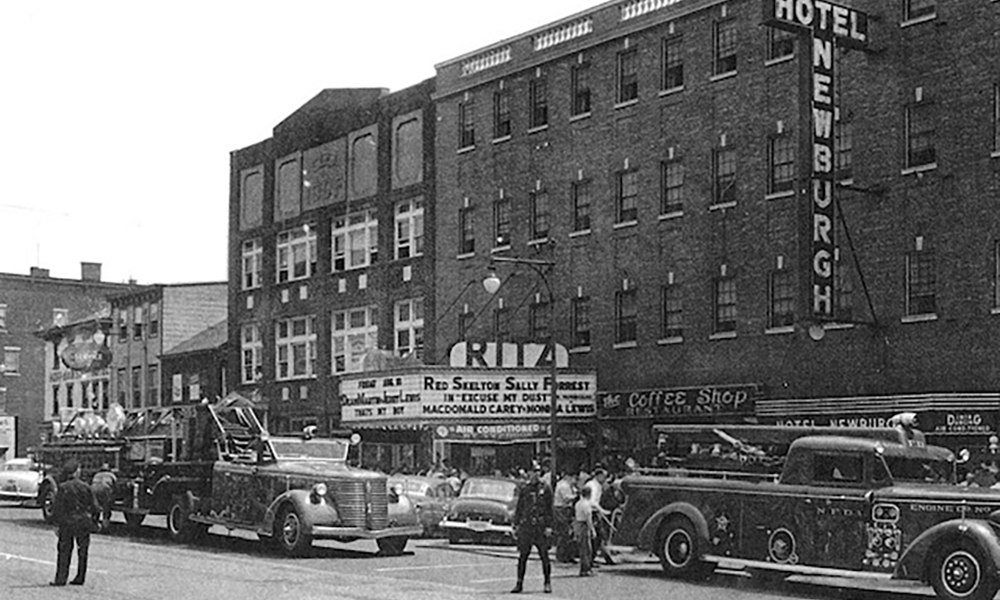
The Ongoing Search For Dutch Schultz’s Missing Millions
by Ross and Grace Getman
“Blam!” “Blam!” “Blam!” When police arrived and asked Dutch Schultz who shot him, he replied, “I don’t know, but they were pretty good shots.”
This is a true story of a treasure worth an estimated $50 million dollars hidden by Dutch Schultz before being gunned down. The iron chest containing the loot was hidden by Dutch Schultz and his bodyguard Lulu Rosenkrantz. It very likely was hidden in either Upstate New York or Fairfield County, Connecticut.
In 1935, fresh from the successful conviction of Al Capone on tax evasion charges, federal authorities targeted Dutch for failing to report any of the millions he made on his bootlegging enterprise and numbers racket. While Dutch was awaiting his Syracuse trial on the tax charges, the United States Attorney allowed him to stay in Connecticut. The press soon caught up with him in early April, when he was discovered at a hideout in Norwalk. The home was nice — near the water on a peninsula. There was a tall fence in the backyard.
Several years ago, my daughter and I learned that he and his bodyguard, Lulu Rosenkrantz had buried his chest in the backyard, in the garden — but then moved it.
In addition to Liberty Bonds, Dutch put diamonds from the heist of a jewelry store in the chest. One of his lieutenants testified that he never put in a bill that was less than $1,000. Sometimes it was so full he would have to sit on it to close it. The FBI claimed that Schultz did six million dollars in business a year, and collected $825,000 in just the six weeks before he was murdered in October 1935. J.Edgar Hoover said: “That means one million every two months was being paid to just one racketeer.”
Schultz had several options to take the chest after the press flushed him out.
Tuckahoe
First, he could take it to his secret residence in Tuckahoe, NY — en route to the trial in Syracuse. The big old Victorian house is at the corner of White Plains Road and Winterhill Road in Tuckahoe. The home has been converted into a dormitory, Koepchen Hall, by neighboring Concordia College. As an official of Eastchester Historical Society once commented to the press: “That’s where Dutch Schultz lived.” “We know it’s a fact.” “One of our members went to high school with his daughter.” The house was convenient to a brewery Dutch owned in Yonkers, NY through a proxy. There was a secret tunnel leading across the street to a historic tavern. Later it came to be known as the Stephen Ward House, which now also provides housing for college students. The tunnel between the two was filled in. At the Yonkers brewery, Dutch ran hoses under ground and delivered his beer to the taverns directly from the secret bootlegging operation at the Chicken Island brewery.
Ongoing Search For Dutch Schultz’s Missing Millions
Newburgh
Second, another possibility was to take it to a house in Newburgh, NY, that a minion had fortified in 1932 (according to online real estate records). A local resident confides to me that there was a secret hiding place behind a book shelf that opened big enough for a chest. The house was not far from a tavern connected by a tunnel. Dutch and Lulu had been seen riding horses in the area in Fall 1934 when Dutch was still on the lam. The FBI dispatched agents to investigate. When Dutch turned himself in, a newspaper reported: “Ten days ago, the Commissioner added, he had information that Schultz was hunting ‘on his own private estate outside of Newburgh, N.Y.’ ” There was a tunnel from the house to the nearby speakeasy. At last report, the house has been put up for sale. The speakeasy is now the site of North Plank Road Tavern. The owner has described to me how, upon renovation, a secret trap door was discovered that concealed guns and booze under the kitchen.
Lake George, NY
Third, maybe he took the chest to Lake George. When spotted in Newburgh, a tip phoned in to New York City indicated that he first went to a “row of cottages” in Lake George. He spent 10 days there before turning himself in at Albany. He was worried about being shot by the federal men and State Troopers who were increasingly determined to get him. Rather than in Newburgh, about 110 miles from Saratoga, he now was reported “safe in a mountain hideaway not twenty-five miles from Saratoga Springs.” “[H]is hideaway, according to Saratoga report, defies discovery by anyone not familiar with the mountains.”
The August 1935 issue of “Fortune”, in an article titled “Saratoga,” similarly reported that Dutch Schultz had been there that summer and that his hideout could be seen from the “highest point in Saratoga.” “The New York Sun,” November 26, 1934 announced “Dutch Schultz reported near Saratoga now: Federal Agents Gathering There for Search of Mountains.” When a 25-mile radius is drawn around Saratoga Springs, the area within the blue line of the Adirondacks includes both Lake George, NY in the north— and Northville, NY in the northwest.
Dixie Davis, while he later was in the midst of disbarment proceedings and faced the risk of prosecution by Thomas Dewey, hunkered down with his girlfriend Hope Dare at a Lake George cottage. “We took a cottage at Lake George, in the Adirondacks, to wait and see what would happen.” Dixie knew a lot about Dutch’s whereabouts and travels, and so perhaps he and Hope Dare went to Lake George in search of the stash. Did they find it? Dixie later died of a heart attack upon a home invasion.
In 1935, Davis was upset that Dutch had murdered a mob associate Jules Martin right in front of him at the Cohoes Harmony Hotel. It was unlikely that Dutch shared information about where he kept the chest with Dixie.
Troy, NY
Fourth, he and Lulu may have taken the chest to a hideout in Troy.
After he pressed by police to leave the Hendrick Hudson hotel, and spending some time again in Lake George, Dutch turned to several Troy-area hideouts. Dutch and his attorney Dixie Davis sometimes walked through the city and once were at the old Drake’s drugstore about a block up from his residence at 4th & Congress St. He later moved to an apartment on the East Side that he rented under an assumed name. During this early 1935 period, he was also in Lansingburgh, a village in northern Troy. His wife Frances stayed with him for some of the time in Troy in February.
Ongoing Search For Dutch Schultz’s Missing Millions
Saratoga Springs, NY
Fifth, another possibility was in Saratoga Springs itself. The Gideon Putnam hotel opened on July 27, 1935 amidst great fanfare. It is located in Saratoga Spa State Park. Gideon Putnam was the nephew of Revolutionary War hero Israel Putnam, who famously waved back his sword at pursuing British solders and yelled “talk to the sword!” Dutch Schultz used the “talk to the sword!” phrase in his morphine-addled last words — quickly followed by “Shut up!, you got a big mouth!”
Fairfield, Connecticut
Or maybe he stashed the chest closer to where he hoped to settle. Once the scheduled April 1935 tax evasion trial in Syracuse was done, Dutch hoped to settle in Fairfield County in Connecticut. “I like it here,” Dutch said. “And if I win [the tax evasion trial] I will make this my permanent home.” He had some friends who were influential fraudsters living there in Fairfield under false identities. They had all the right connections — including connections in DC that Dutch hoped would avoid or quash the federal tax problems. His friend Phil Coster (Musica) lived on Mill Plain Road. Dutch and Lulu would ride the trail from the Dudley Brothwell’s nearby Brookside Stables. Dutch and Lulu would leave their entourage behind. Stable logs show in the summer of 1935 he rode his horse, Sun Tan, almost daily in August. “I like riding. It’s the only exercise I get.” He would have passed a lot on Campbell Road in Fairfield that was being built that summer (according to real estate records found at the local historical society). In the late 1930s, after Coster (Musica) wrote in his suicide note that there was no buried treasure, one local policeman was found digging under the dog house of Coster’s St. Bernard.
While he was awaiting the Syracuse trial, Dutch spent the first ten days in April 1935 with Frances, who was five months pregnant, at the house in Norwalk, CT. Dutch had entered a two-month lease. He leased the home under his real name, Arthur Flegenheimer. He abruptly had to leave after 10 days because of the press attention. Headlines around the country reported that day that “Dutch Schultz Flees Curiosity Seekers.” His neighbors did not know that the quiet man who would nod at them when they passed was the notorious Dutch Schultz.
Dutch turned in his keys to Mrs. Lyman Bracken, the woman who had rented it to him, on April 11, 1935. When my daughter and I visited the Norwalk residence some years ago, I asked “Did you know that Dutch Schultz, the famous gangster, lived here for 10 days in 1935?” Vivian, the gracious owner, described that she and her husband had heard the history. Whenever they renovated the house, they would look into every nook and cranny. Then, a couple years before our visit, upon digging in the garden they found a metal sheet that had covered a rectangular hole. She offered my young daughter ice cream as an added treat. The entire experience was wonderful Connecticut Yankee hospitality offered to New York neighbors.
The key question that needs answering is: “Where did Dutch Schultz and Lulu Rosenkrantz sleep on the nights of April 11, 12 and 13, 1935?”
On April 15, 1935, the Syracuse Post-Standard reported that “Flegenheimer arrived at Hotel Syracuse [on the 14th] shortly before 5midnight after a nine-hour drive from Connecticut.” Where did he leave the chest off? Did he really come directly from Connecticut? That more likely is the reporter’s assumption.
Dutch gave interviews during the course of the trial. Schultz says he liked reading. His favorite book was by Stefan Zweigh — it was about Joseph Fouche, Napoleon’s head of intelligence. He said the characters reminded him of people he knew. He acknowledged that he was married. But when asked if he had children, he said “We’ll skip that. Just forget it.” He was furious when he learned that directly behind him, someone had written on a blackboard, in big letters, “ ‘X’ Marks The Spot.”
Only he and Lulu knew where he took the chest. He didn’t tell his young wife Frances. His wife was left destitute after Dutch and Lulu were gunned down in October 1935, when they returned to New York City after Dutch was acquitted for tax evasion. There had been a hung jury in Syracuse. Then there was an outright acquittal upon a retrial in Malone, NY. Dutch had always been confident that he would be able to win the hearts and minds of the farmers and townspeople in Syracuse and Malone. After all, he was big spender and a man of good will. Back in New York, Dutch suggested to the “Commission” that prosecutor Tom Dewey needed to be killed — whether the Commission agreed or not. Dutch didn’t count on his business associates taking such a harsh view of his independent streak. He and Lulu were gunned down by Murder, Inc. killers at the Palace Chophouse in Newark, New Jersey in late October 1935. For the genealogy experts out there, his daughter Ann born 1934 and son John born in 1935, are nowhere to be found.
The treasury bills reportedly have never been redeemed. Thomas Dewey, the famous prosecutor, Governor of New York and Presidential candidate, generated headlines like “Dewey Hunting Schultz Cache in Hines Case” as he prosecuted the corrupt Tammany Hall politicians.
After he was acquitted in Malone, NY, Dutch returned to Syracuse to thank some “friends.” An August 5 newspaper quoted him saying from Malone: “I don’t know exactly what my plans are. I hope to get to New York by the end of the week. I’ll probably stop in Albany first. [Albany is where his attorney Noonan had an office]. Right now I’m interested in seeing my friends in Syracuse — friends I’ll never forget.” But soon after he arrived to the top floor of the Hotel Syracuse, there was a knock on the door. John Ross, a process server, had travelled from Albany by train to serve Dutch with notice that he was to be deposed in three days in Albany. He would have to testify under oath about the location of his assets or face contempt charges.
Dutch’s entourage promptly made multiple diversionary reservations — on plane and train. A news report indicates that he stayed up late the morning of August 6th, Tuesday. One report at the time noted that he was planning a circuitous route on back roads. Was the report just to avoid being bumped off by rivals? Or was he planning a route that would take him and Lulu back to the chest. His friends in Syracuse likely included Charles Garzone, who had owned a stables and tavern on South Ave here in Syracuse. The place was known for gambling. Garzone’s grandson, a documentary filmmaker, says he uncovered evidence his grandfather was a mob associate, who may have reported to the Lucky Luciano-led Commission, which included Dutch.
The chauffeur, “Mike”, made a conspicuous departure the next morning. But Dutch and Lulu snuck out the back way, using the Hotel Syracuse service elevator. The Syracuse Journal headline on August 6, 1935 blazed: “SCHULTZ FLEES FROM SYRACUSE.” They arrived at the Hotel Bridgeport, on August 7. But where had they spent the night of August 6? His lawyers caught up with them to plan how they would respond to this newest threat to his freedom. Dutch and Lulu snuck out the back of Hotel Bridgeport late August 7 just before midnight, returning at 5 a.m. The next day, speaking to a reporter at the hotel restaurant, Dutch suggested that he had been out with the boys playing poker.
Ongoing Search For Dutch Schultz’s Missing Millions
Phoenicia
As for the widespread suggestion that the chest was hidden in the Catskills, that theory, in my long-considered opinion, was balderdash. It appears to have originated from a treasure writer in 1968 who first inserted a sentence in Dutch’s morphine-addled delirium at the hospital after he was shot. The sentence added was something like: “Hey, Lulu, let’s go up to Phoenicia and dig up the loot.” F.J. Lang was the court stenographer at Schultz’s bedside after he was shot in October. Lang’s transcript was published in the New York Times at the time. The sentence that has fueled documentaries and spawned an “Unsolved Mystery” episode does not appear in the transcript. Nor does it appear in the excellent book KILL THE DUTCHMAN, written by the late Paul Sann, Executive Director of the Daily News. Schultz and his colleagues were in Phoenicia a couple years earlier — in 1933. In particular, the treasure writer, Schurmacher, mistakenly described a scene from the Hotel Stratfield in Bridgeport, where Dutch reportedly loaded the chest in front of seven witnesses, as occurring in 1933 rather than 1935. If you come across a treasure theory that includes someone’s claimed psychic vision after seeing an episode of “Unsolved Mysteries” — rather than corroborated historical evidence — you can safely leave your shovel at home.
On the other hand, Phoenicia is between Syracuse and Bridgeport too — just like Yonkers, Newburgh, Troy, Saratoga and Lake George. Until the chest is found, we won’t know where it was hidden.
Dutch’s last words are fascinating. His drug-addled narrative contains many possible clues and is provably rooted in the people and facts of his life. “French Canadian bean soup” and “Talk to the Sword!” are just two of the many curious phrases that await consideration of an arm-chair detective. It may have been “Oh, oh; dog biscuit, and when he is happy he doesn’t get snappy” that led the policeman to dig under the doghouse of a Schultz associate, Costa, in Fairfield. Then there are these words to live by: “Mother is the best bet and don’t let Satan draw you too fast.”

